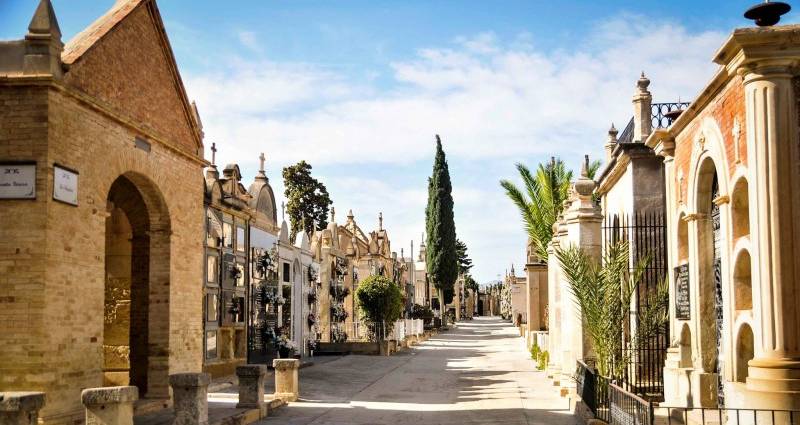Cemeteries - Outdoor Museums

Every 1st November to celebrate the Día de Los Santos, many people visit cemeteries and place flowers on the graves of their loved ones. But can you imagine that cemeteries may also be a tourist attraction?
The European Cemeteries Route, which is an association called ASCE (Association of Significant Cemeteries in Europe) which belong to 179 cemeteries in 22 countries. These are genuine open-air museums, whose main attraction lies in its history, architecture and artistic heritage.
Although Spain is not yet deeply rooted the idea of visiting a cemetery as a tourist, there are many locations that have launched guided tours. An example of this is the Almudena Cemetery in Madrid. This cemetery has a monument to the thirteen women, best known as the Thirteen Roses, shot in the cemetery during the Franco regime.
In Spain about 24 cemeteries are associated to ASCE. Of these, the most remarkable are the regions of Asturias, Cantabria, Basque Country, Catalonia, Valencia and Andalusia.
In the region of Valencia there are cemeteries that have been recognised as significant by the European Association of Significant Cemeteries. The old Elche cemetery, built in the early 19th century has pantheons and structures revealing the co-existence of numerous different styles such as Neoclassicism, neo-Mudéjar, neo-Romanesque and neo-Gothic. In addition, due to its subsequent enlargement, there are also examples of Modernist and art-deco sculptures.
Alcoy, situated outside the town and is known as the “Old Cemetery”. The area of the greatest wealth and artistic variety is the one of the free-standing vaults. The artistic styles’ evolution is appreciable in the cemetery, going from Eclecticism, which is the most widespread, up to Historicism or revivals, Modernism or Nouveau and Sezession styles and, finally, to Art Déco and Avant-garde.
The General Cemetery of Valencia was officially opened in June 1807. The cemetery stands out for its splendid vegetation, sculptures and pantheons. There are 103 pantheons catalogued, built between XIX and XX Centuries. There are also several niches with embossed letters and important ornamental details that make an architectural ensemble of first magnitude.
These routes are a chance to discover the distinctive cemeteries in Spain on the European Cemeteries Route, which has been recognised by the World Tourism Organisation as an innovative way of disseminating and interpreting Europe's heritage.









